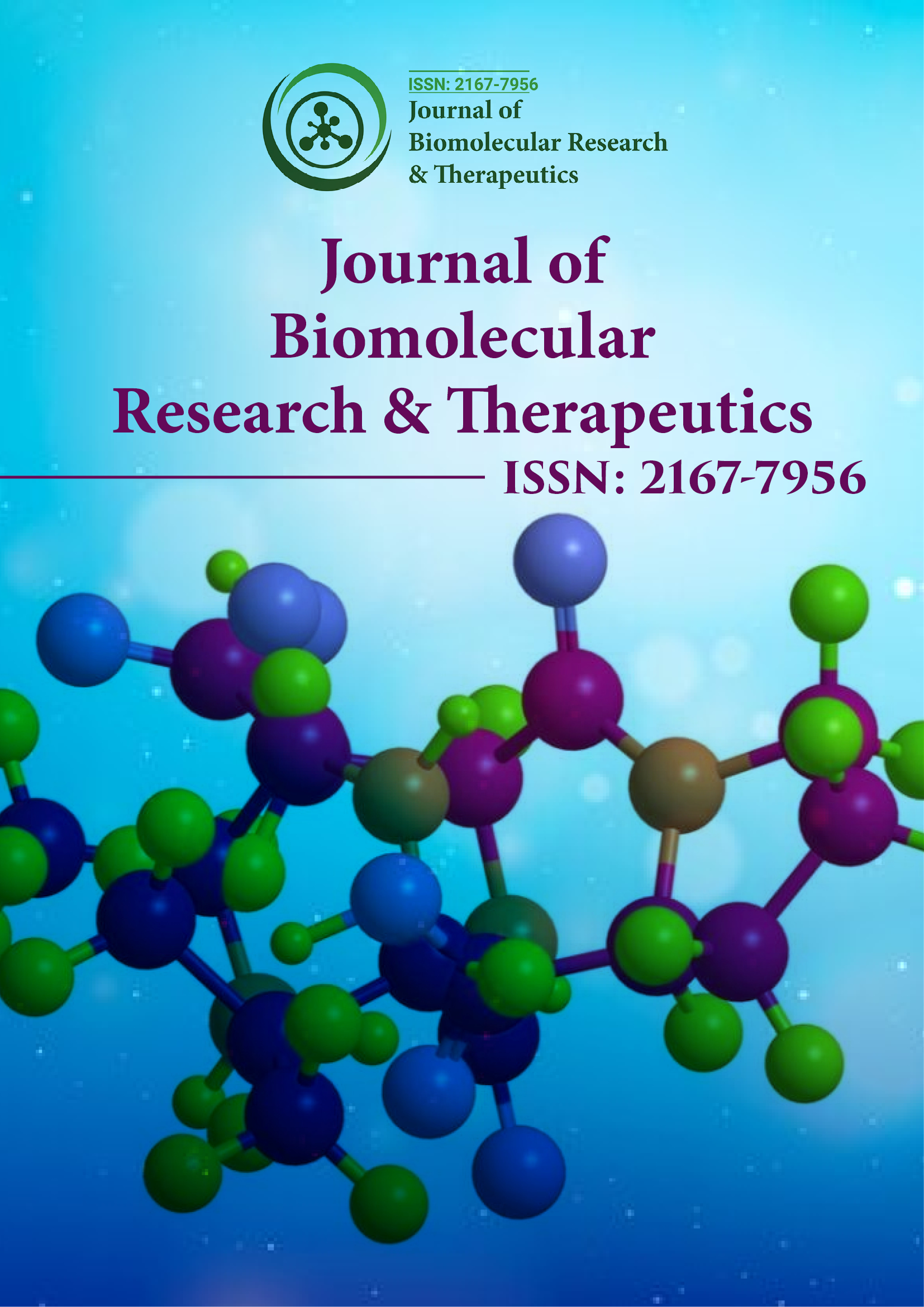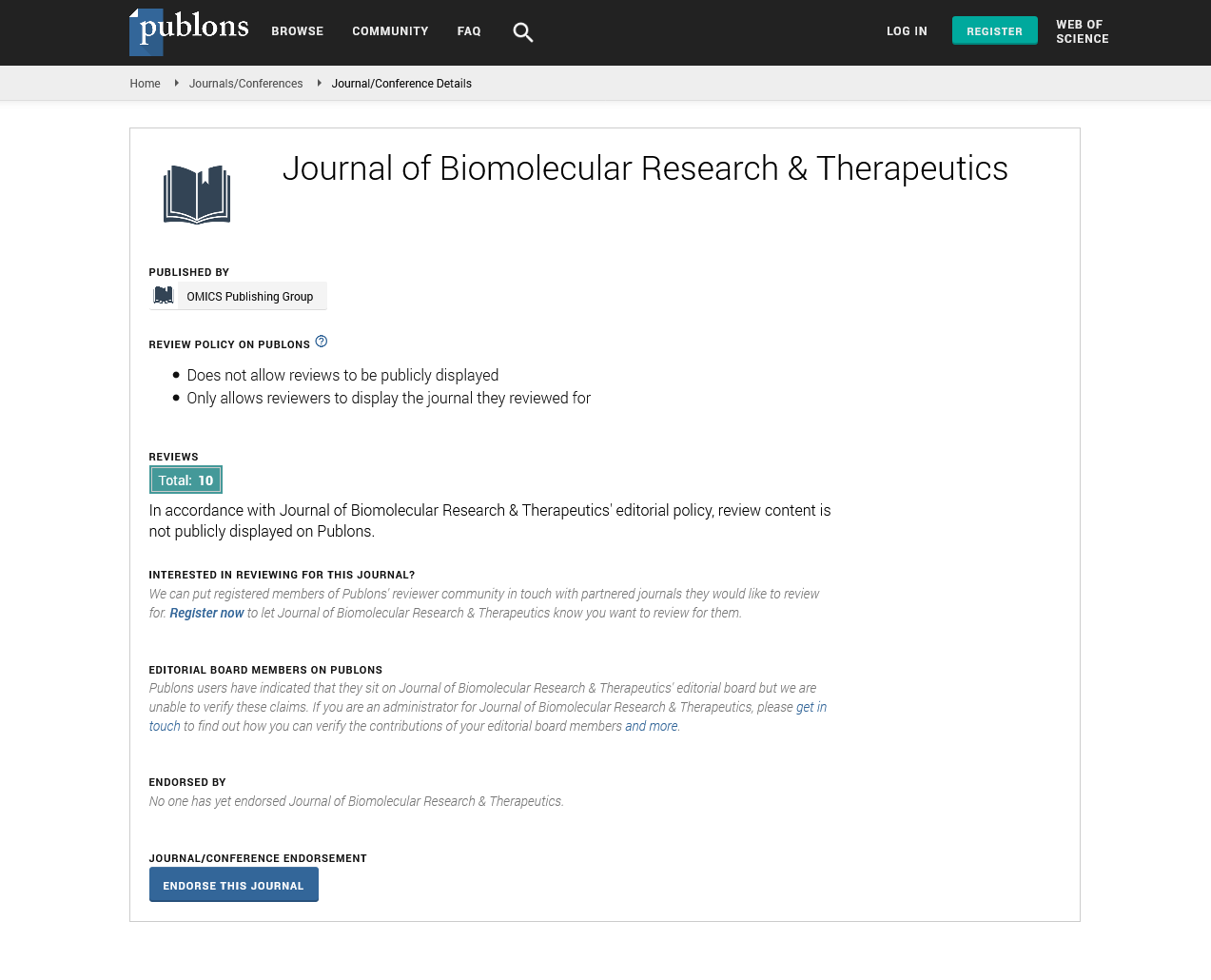Indexed In
- Open J Gate
- Genamics JournalSeek
- ResearchBible
- Electronic Journals Library
- RefSeek
- Hamdard University
- EBSCO A-Z
- OCLC- WorldCat
- SWB online catalog
- Virtual Library of Biology (vifabio)
- Publons
- Euro Pub
- Google Scholar
Useful Links
Share This Page
Journal Flyer

Open Access Journals
- Agri and Aquaculture
- Biochemistry
- Bioinformatics & Systems Biology
- Business & Management
- Chemistry
- Clinical Sciences
- Engineering
- Food & Nutrition
- General Science
- Genetics & Molecular Biology
- Immunology & Microbiology
- Medical Sciences
- Neuroscience & Psychology
- Nursing & Health Care
- Pharmaceutical Sciences
Opinion Article - (2024) Volume 13, Issue 5
Transforming Structural Biology: The Role of Integrative Modeling in Understanding Biomolecular Complexes
Alexandre Karaca*Received: 30-Sep-2024, Manuscript No. BOM-24-27787; Editor assigned: 02-Oct-2024, Pre QC No. BOM-24-27787 (PQ); Reviewed: 16-Oct-2024, QC No. BOM-24-27787; Revised: 23-Oct-2024, Manuscript No. BOM-24-27787 (R); Published: 30-Oct-2024, DOI: 10.35248/2167-7956.24.13.405
Description
Advances in integrative modeling of biomolecular complexes have transformed our understanding of complex biological systems. Biomolecular complexes, composed of interacting macromolecules like proteins, nucleic acids and lipids, play pivotal roles in cellular processes. Their structural and functional characterization is essential for uncovering mechanisms of life and disease. While traditional experimental techniques provide valuable insights, they often struggle to resolve the structures of large and dynamic assemblies. Integrative modeling, combining experimental and computational methods, has emerged as a powerful approach to address these challenges.
Integrative modeling synthesizes data from diverse sources, such as X-ray crystallography, cryo-Electron Microscopy (cryo-EM), Nuclear Magnetic Resonance (NMR) spectroscopy and Small-Angle X-ray Scattering (SAXS). It also incorporates biochemical, genetic and computational information to create comprehensive models. By using complementary datasets, integrative approaches offer insights beyond the scope of any single method. Key advancements include the development of algorithms that handle heterogeneous data with varying resolutions and uncertainties. Bayesian frameworks, which incorporate prior knowledge and quantify uncertainties, have become particularly effective for generating robust models. These approaches enable researchers to assess confidence levels and identify gaps for further exploration.
Cryo-EM has significantly advanced the field of structural biology and its integration with computational modeling highlights the power of combined methods. Cryo-EM reveals detailed structural data about large complexes, often at near-atomic resolution. However, flexibility and dynamic properties of biomolecular assemblies can complicate density map interpretation. Integrative modeling incorporates complementary data, such as cross-linking mass spectrometry or mutagenesis results, to refine these models. This synergy has been instrumental in resolving complex structures like the ribosome and spliceosome, which are important to cellular function.
Dynamic biomolecular complexes, which undergo essential conformational changes, present unique challenges. Integrative approaches, enhanced by Molecular Dynamics (MD) simulations, capture these dynamic states. MD simulations reveal conformational landscapes, offering insights into mechanisms like allostery and catalysis. This combination provides a deeper understanding of functional transitions within complexes. Nucleic acid and lipid interactions have also benefitted from integrative modeling. Nucleoprotein assemblies, such as chromatin and ribonucleoprotein particles, are important for genome organization and regulation but pose difficulties for structural characterization. Integrative approaches have elucidated their architecture and dynamics, providing insights into interactions between nucleosomes, histone modifiers and DNA-binding proteins. Similarly, advances in modeling lipid-protein interactions have improved our understanding of membrane protein behavior, a key area for drug discovery.
Despite these achievements, integrative modeling faces challenges. The quality and availability of experimental data remain as essential limitations. Reliable models depend on accurate data and gaps or inaccuracies can undermine results. Advances in data collection methods, such as improved cryo-EM technologies and cross-linking mass spectrometry, are expanding the range and quality of available information. Computational complexity is another hurdle. Processing and integrating large, heterogeneous datasets require substantial resources. High performance computing and algorithmic optimizations are helping address these demands, allowing researchers to tackle increasingly complex systems. Additionally, user-friendly software platforms are making integrative modeling tools accessible to a broader scientific community.
Validation and interpretability of integrative models remain areas of active research. While these models align with diverse data, assessing their biological relevance requires careful verification. Cross-validation with independent datasets and experimental testing of predicted interactions are essential for confirming model accuracy. Machine learning and AI are beginning to play roles in model validation, offering automated techniques for evaluating plausibility and reliability. Integrative modeling is also benefiting from AI and machine learning advancements. These technologies accelerate data processing, improve prediction accuracy and uncover hidden patterns. AIdriven methods are enhancing tasks like protein-protein interaction prediction, de novo folding and biomolecule design. Their combination with integrative modeling promises even greater breakthroughs.
In conclusion, integrative modeling has revolutionized the study of biomolecular complexes by combining diverse experimental and computational data. This approach overcomes the limitations of individual methods, enabling detailed analysis of complex and dynamic assemblies. While challenges persist, advancements in experimental techniques, computational methods and AI integration are poised to enhance this field further. As integrative modeling evolves, it will continue to play a central role in decoding the molecular complexities of life.
Citation: Karaca A (2024). Transforming Structural Biology: The Role of Integrative Modeling in Understanding Biomolecular Complexes. J Biomol Res Ther. 13:405.
Copyright: © 2024 Karaca A. This is an open-access article distributed under the terms of the Creative Commons Attribution License, which permits unrestricted use, distribution, and reproduction in any medium, provided the original author and source are credited.

